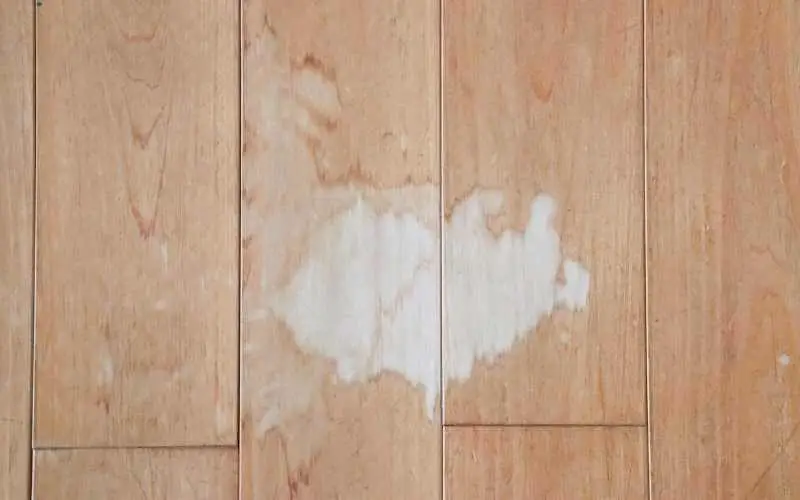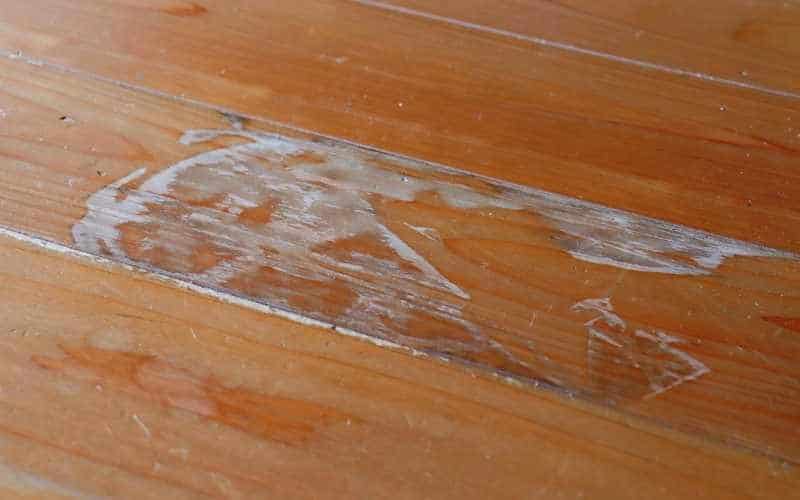It occurs on a regular basis; you place the bleach container down on your laminate floor and forget about it while you’re using it around the home. When you take it up, a bleach mark stares you down, reminding you of your sloppiness.
If such a scenario painted above ever occurs, we are certain that you demand a prompt answer to the question, how to remove bleach stain on laminate flooring. To remove bleach stain on laminate floors, apply hydrogen peroxide on the affected area.
Read on as we explore various methods on how to remove bleach stains on laminate flooring.
How to Remove Bleach Stain on Laminate Flooring
Table of Contents
Below are some methods that you can use to remove bleach stains on laminate flooring.
1. Use Hydrogen Peroxide
Put your rubber gloves on. Using a cotton ball, apply hydrogen peroxide to the stained area. Allow the hydrogen peroxide to sit on the stain for two minutes before rubbing it off.
Dip a clean cloth in a bowl of cool water and rinse the area with the cloth to remove the hydrogen peroxide.
2. Use RIT Dye Remover
If the stain is still there, you might have to try another method. In a small dish, combine RIT dye remover with a small amount of water to make a paste solution. Apply the paste to the stained area with the toothbrush. Leave for a few minutes.
Rinse the area with a clean cloth to cloth to remove the paste and allow the area to dry.
3. Sand then Fix with a Laminate Repair Paste
This becomes necessary if you are dealing with a very stubborn stain.
Use 100-grit sandpaper to sand the bleach mark. Use the corner of the sandpaper to spot sand only where necessary.
Then dip a putty knife tip into a can of laminate repair paste. This paste is available in a variety of colors. Select one that complements your laminate.
Then rub repair paste over the sanded area to completely cover it. Use a putty knife to make the smear as level as possible. Give it at least 24 hours for the paste to dry.
After the paste must have dried up, buff the affected area carefully with fine-grit steel wool. Using a piece of denim, polish the area.
Circular movements with enough force to generate heat through friction should be used. Continue rubbing the area until the laminate has absorbed the paste.
4. Use a Marker
Using a marker is another way to remove or at least cover bleach stain on laminate floors.
Get a stain marker that matches the color of the laminate. If feasible, test the color in an inconspicuous area of your laminate floor to ensure it matches. If it doesn’t match, experiment with various markers.
Apply the stain marker tip on the bleach mark. Hold it like a pencil and gently press down on the spring-loaded tip to release just enough stain to dampen the end of the marker.
Color the mark with a dampened marker tip. Wipe away any stray marks or lines with the tip of a dry cloth outside the perimeter of the bleach mark. Allow the stain to cure for at least 24 hours.
If the stain is too dark, lightly rub it with the corner of an acetone-dampened cloth to brighten it. If the colored area is too light, use a darker marker.
Related: How to fix bleached carpet
Will Bleach Ruin a Laminate Floor?
Don’t use bleach on laminate or wood flooring. Long-term bleach contact will damage the finish of a laminate floor, but short-term bleach exposure is probably safe, as long as you wipe the floor dry after use.
However, there is always the possibility of seepage between the floors, which might expand the boards and raise the edges.
Read: How to whitewash laminate flooring
Conclusion
Laminate is designed to withstand a wide range of stain-causing liquids, from rich, crimson cherry juice to bleach splashes.
However, not all laminate is made equal, and certain counters can discolor more easily than others. With the help of this post on how to remove bleach stains on laminate flooring, you are quite well off.
Serious bleach stains, such as those on a dark laminate workplace, must be sanded and repaired. The bleach has pierced the laminate’s protective surface and erased the coloring or design. Spread a shaded epoxy or acrylic adhesive onto the sanded area with 150-grit sandpaper and a laminate repair kit.
The laminate must be re-sealed after sanding and fixing. A long-lasting laminate countertop polish may be readily sprayed on. To avoid the possibility of a future bleach stain on the laminate worktop, keep the laminate well protected with a countertop polish.

